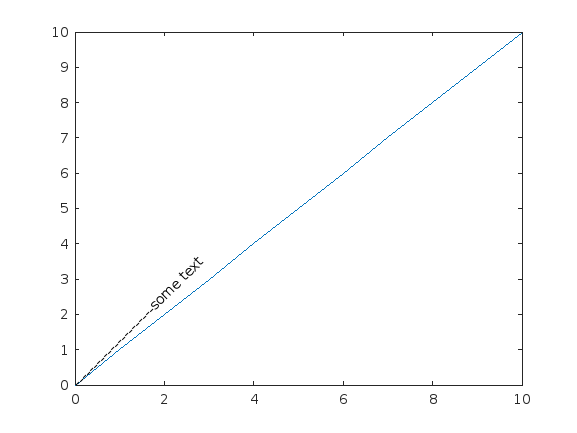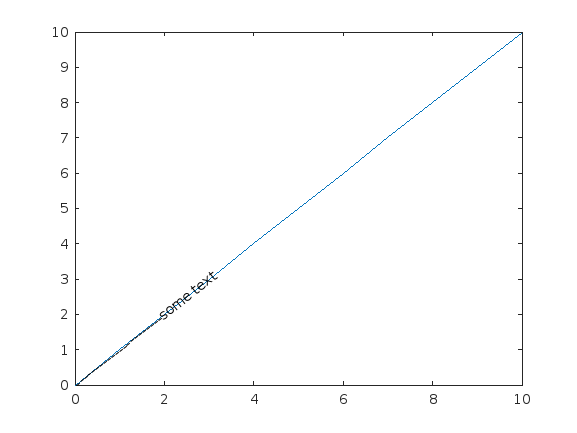This is a little hard to explain. I am not looking for the angle of the line with respect to the cartesian coordinates, I am looking for the angle with respect to the plot window itself.
For context, I am trying to use this angle to produce some text that has the same angle as the line
For Example:
plot([0:10], [0:10]) text( 0, 0, "----------------------some text", Rotation = 45) p = subplot(1,1,1); disp(p.Position(3:4))

disp(p.Position(3:4))
0.7750 0.8150
See how the text angle doesn't match the line angle, and the plot itself is not a square
i- I'd imagine some calculations are in order, and it would need the size of the window as an input.
ii- I also thought that ths cannot be that complex, surely there's a way to write text on the plot at an angle relative to the plot's coordiates, right?
If anyone has someinsight on (i) or (ii), that would be highly appriociated!
NOTE:-
Matlabsolutions.com provide latest MatLab Homework Help,MatLab Assignment Help , Finance Assignment Help for students, engineers and researchers in Multiple Branches like ECE, EEE, CSE, Mechanical, Civil with 100% output.Matlab Code for B.E, B.Tech,M.E,M.Tech, Ph.D. Scholars with 100% privacy guaranteed. Get MATLAB projects with source code for your learning and research.
Try the PlotBoxAspectRatio property.
plot([0:10], [0:10]) ar = get(gca, "PlotBoxAspectRatio")
ar = 1×3
1.0000 0.7897 0.7897r = atand(ar(2)/ar(1)) % This will give you the angle of the diagonal of the axes in degrees
r = 38.2985
text( 0, 0, "----------------------some text", Rotation = r)

Comments
Post a Comment